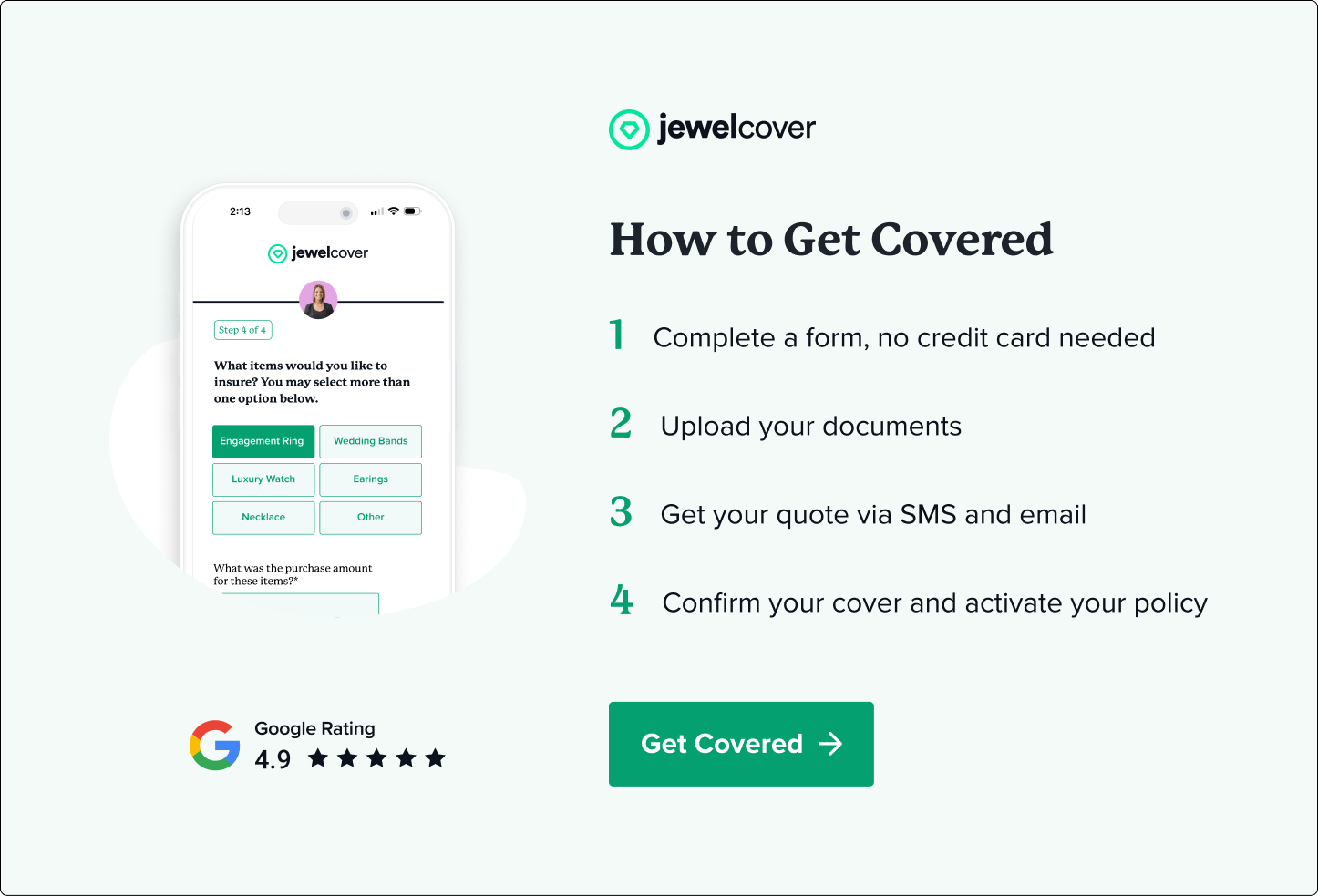A pair of sparkly diamond earrings provides a classic pillar for any jewellery collection. But you might shy away from buying a pair because they seem risky.
Accidents happen. A back may fall off, and you could go all day without realising that one of your precious diamonds has disappeared on the street. They’re so tiny; it wouldn’t take much for one of them to be brushed off the sink where it disappears down the drain.
While there are plenty of ways to take precautions with diamond earrings, there’s one protective measure that trumps them all: insurance. To wear them with confidence, you’ve got to insure your diamond earrings. Therefore, this article explores the basics of timeless diamond ear studs and how you can protect them from the perils of daily life.
Occasions for Wearing Diamond Earrings
Many people acquire diamond earrings for a special event--a wedding, graduation or fancy dress ball. But the wonderful thing about this splurge is that you can wear them for so many different occasions.
While diamond earrings look right at the opera or an anniversary party, they can be worn casually as well. In summary, they might be the most versatile, classic jewellery item you can buy.
You can pair them with a ball gown and tiara or with a t-shirt and jeans, and either way, you’ll look fabulous. And it’s refreshing to purchase a quality jewellery item that you can enjoy as often as you want. That’s as it should be.
A Brief History of Diamond Earrings
They look modern and fresh, but earrings have been around for over five thousand years. And one of the earliest forms of the stud earring was a trendy style in ancient Egypt.
But the modern stud earring didn’t make its appearance until the late nineteenth century. By the 1970s, it had become an iconic fashion staple, partly because of its ability to pair with anything. Today, they’re worn in singles, pairs and multiples, and they show up on the red carpet, on the tennis court and everywhere in between.
The 4 C’s
People usually talk about the 4 C’s of diamond buying when they’re shopping for an engagement ring, but these gem traits are every bit as important when it comes to earrings.
As you know, diamonds originate deep below the earth’s surface, forming over millions of years. However, because of their ancient origins and rough-and-tumble journey, natural diamonds have flaws.
Jewellers typically seek close matches when creating diamond earring pairs, and the 4 C’s help them do so. A graded diamond report also helps you, as the consumer, to understand what you’re purchasing and how to compare various pairs.
Let’s have a quick review of the 4 C’s:
Carat
A 1-carat diamond weighs 200 milligrams or 0.2 grams. That’s about the same as a quarter of a raisin. Substantial-looking stud earrings usually weigh in at 0.5 to 1.0 carat each.
Colour
Labs, like the GIA (Gemological Institute of America), grade diamonds in terms of how white or colourless they are. The grading scale ranges from D to Z, with D being the most colourless and Z tinted with yellow or brown.
Cut
Diamond cut refers to the quality of a diamond’s angles, proportions, symmetrical facets, brilliance, fire, scintillation and finishing details. Diamond labs grade a diamond’s cut as Ideal, Excellent, Very Good, Good, Fair or Poor.
Clarity
As mentioned previously, diamonds have had a long, rough go of it, and labs grade the stones on how “flawless” they are, using the following designations:
- FL (Flawless)
- IF (Internally Flawless)
- VVS1 (Very, Very Slightly Included 1)
- VVS2 (Very, Very Slightly Included 2)
- VS1 (Very Slightly Included 1)
- VS2 (Very Slightly Included 2)
- SI1 (Slightly Included 1)
- SI2 (Slightly Included 2)
- I1 (Inclusions 1)
- I2 (Inclusions 2)
When purchasing diamond earrings, be sure to ask the jeweller for the stones’ certification documents. If you ever resell them, you’ll want to be able to provide the papers.
Insuring Your Diamonds FAQ
Now that we’ve covered the background and basics of diamond earrings, let’s get to the nitty-gritty. How will you protect those sparklers? Here are answers to the most frequently asked questions.
Do earrings count as one item or two?
A pair of diamond earrings counts as one item when it comes to insurance. They’re protected as if they were a ring or a bracelet.
What if I lose one earring?
If one of your earrings disappears, you’ll file a claim and provide any necessary documentation. Then, you can return to your original jeweller for a replacement of the missing earring.
What if I lose my earrings while I’m travelling?
With JewelCover insurance, you’re covered anywhere you travel in the world. Some policies offer limited coverage for a specific period while travelling. But if you’re insured with us, you can enjoy limitless worldwide cover, no matter how long you’re away from home.
How do I know if I have enough coverage?
With some types of insurance, such as home and contents, you probably won’t receive a large enough benefit to cover the cost of a replacement pair of diamond earrings. But at JewelCover, we provide the complete agreed value protection. And to make sure you always have enough cover, we give our clients a complimentary revaluation every year. That way, you’ll always know how much your diamond earrings are worth, and you’ll have enough insurance to restore or replace them if necessary.
Get a Free Quote
Full-service, specialised jewellery insurance sounds like an expensive luxury, but you’ll be surprised at how affordable it is. Get your free, instant quote online. Or, if you’d rather, you can ring us at 1300 522 808. We’ll be happy to answer your questions and put your mind at ease. Enjoy those diamond earrings!



